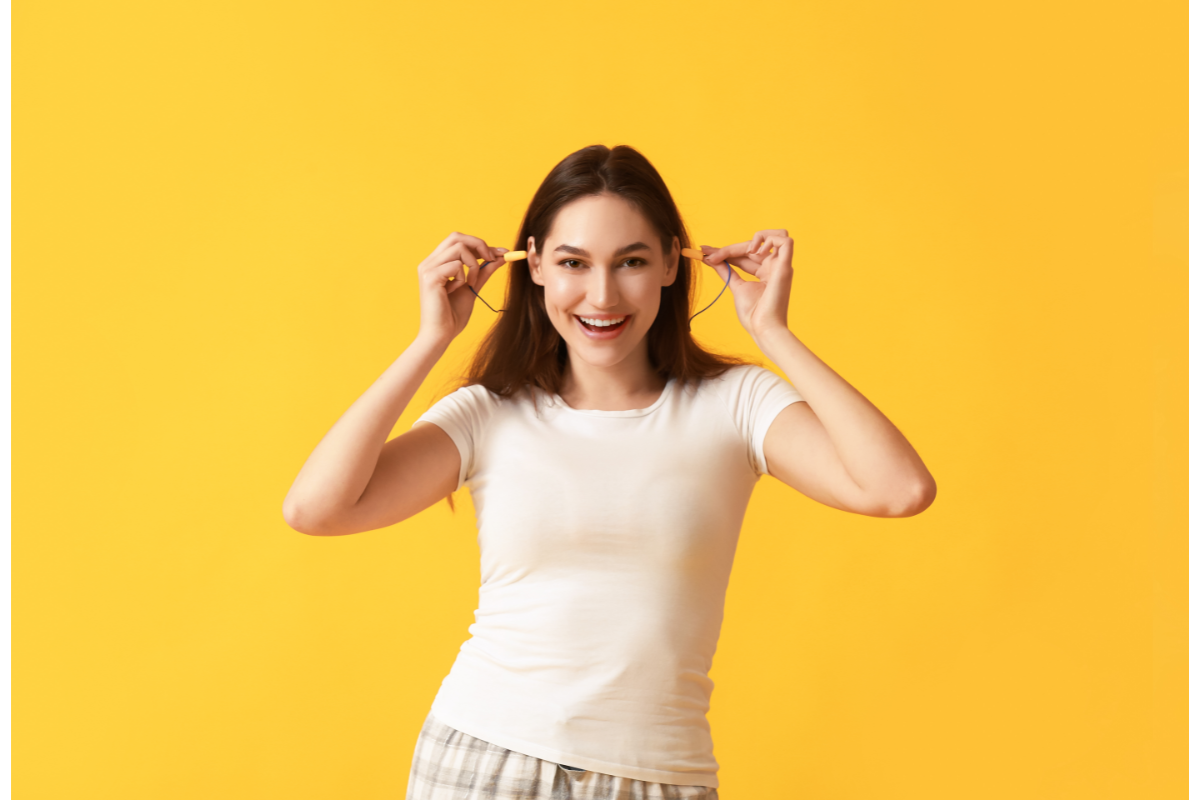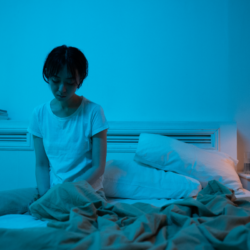“How do I choose my hearing protection to suit my activities?” This is the question we all ask ourselves when confronted with high noise levels, whether at work, during DIY, at noisy sporting events or even when simply cohabiting with urban noise pollution. Repeated or prolonged exposure to these noises can not only damage our hearing systems, but also affect our general well-being and physical health. So it’s vital to choose the right hearing protection to protect yourself effectively. In this article, we’ll help you to understand the selection criteria and choose the hearing protection best suited to your activities.
When was hearing protection first developed?
The history of hearing protection reveals a fascinating evolution, marked by technological advances and a growing awareness of the importance of hearing health. Initially, hearing protection was rudimentary, often improvised with available materials such as cotton wools or wax. With industrialisation and the increase in environmental noise, the need for more effective protection became obvious. The 20th century saw the introduction of the first modern earplugs made from synthetic materials, offering better noise attenuation. Today, thanks to technological advances, hearing protection is not only more effective, but also more comfortable, customisable and suitable for a range of activities, from noisy work environments to concerts. This development underlines the importance of protecting our hearing, a precious and often underestimated sense.
Why use hearing protection?
It’s important to understand that excessive noise can cause not only permanent hearing damage, but also disruption to brain networks, namely our memory and concentration. What’s more, continuous exposure to noise, such as noise pollution, destabilises the whole body, particularly the cardiovascular system and, in the long term, the immune system. What’s more, the high noise levels associated with certain ‘fun’ activities, such as motor sports, fireworks, concerts and music festivals, can also cause hearing damage.
What are the different types of hearing protection?
Here is a complete list of the different types of hearing protection:
- Disposable earplugs: Usually made of foam, they are used for a single use.
- Reusable earplugs: Made from durable materials such as silicone, they can be washed and reused.
- Reusable earplugs with filters: These reduce noise while still allowing some communication.
- Ear m uffs: Provide complete coverage of the ear and are used in extremely noisy environments.
- Made-to-measure earplugs: Individually moulded to fit the user’s ear perfectly.
- Hearing protection for musicians: Designed to reduce noise without compromising sound quality.
- Swimming earplugs: Prevent water ingress and protect against infection.
- Silicone protectors: Flexible and adaptable, they offer comfort for prolonged use.
- Wax protectors: Mouldable and effective at blocking out noise and water.
- Foam protectors: Lightweight and effective for maximum sound insulation.
Each type of hearing protection has its own characteristics and is suitable for different environments and levels of noise exposure.
Selection criteria
There are a multitude of hearing protectors available on the market, all designed to meet specific needs. However, choosing the right hearing protection can be a real headache if you don’t know where to start. This is where the selection criteria come into play. In this section, we’ll look at the key factors to consider when selecting your hearing protection.
Noise level
It’s essential to estimate the level of noise generated by your activity. An activity with a high noise level will require better protection than an activity with an average noise level. For example, if you work on a construction site, you will probably need more robust protection than if you work in a relatively quiet office.
Comfort
Comfort is also a key criterion. Uncomfortable hearing protection can be a distraction and may even lead to you not wearing it at all, defeating its purpose. Silicone earplugs, for example, are often very comfortable because they adapt to the unique shape of your ear.
Duration of use
Some types of hearing protection are better suited to prolonged use than others. It’s a good idea to choose an option that is not only comfortable, but also durable.
Ease of use
Depending on the activity you’re involved in, it may be worth opting for hearing protection that’s easy to put on and take off. For some people, earmuffs are easier to use, while others prefer earplugs for their discretion and lightness.
Some activities requiring hearing protection
Each of us engages in a variety of activities throughout the day. Some of these activities can expose our ears to potentially dangerous levels of noise. It is therefore essential to understand which activities require hearing protection and how to choose the best one for each situation. We’ll take a look at some of these activities and discuss the types of hearing protection that may be appropriate.
DIY and gardening
These household activities can expose your ears to high levels of noise, particularly when using power tools such as drills, saws, lawnmowers and leaf blowers. Recommended hearing protection for these activities are foam earplugs, custom-moulded earplugs or earmuffs.
Sports activities
Sports such as hunting, shooting or motocross can expose you to extremely high noise levels. In these cases, we recommend using earplugs or earmuffs specially designed for these activities.
For water sports such as swimming or surfing, special protection is also needed to prevent water-related ear infections. Silicone earplugs are a popular option as they are waterproof and designed to stay in place during activity. Swimming helmets offer full head and ear protection, and can also help reduce noise.
Professional activities
If you work in a noisy environment, it’s crucial to protect your hearing to prevent health problems. For example, hearing loss or tinnitus. The most commonly used hearing protectors in noisy industries such as construction and manufacturing are earplugs and earmuffs.
Noise pollution
Even if you are not directly involved in a noisy activity, noise pollution in your environment can still affect you. In these cases, hearing protection such as earplugs or earmuffs can help reduce your exposure to noise.
QUIES: a benchmark in high-quality hearing protection
With more than a century of expertise under its belt, Quies has always pursued a clear objective: to create solutions that enable everyone to coexist serenely with their environment. Since the design of the emblematic wax balls, Quies has constantly evolved and put its know-how at the service of innovation. Offering solutions tailored to each specific situation. It is in this spirit of innovation and progress that Quies has launched a new technical line of hearing protection: Quies Specific. Quies Specific hearing protectors feature a unique earmould for optimum comfort and maximum acoustic sealing, and incorporate a special filter that reduces unwanted noise, allowing you to enjoy every moment to the full.
How can I keep my earplugs longer?
When it comes to cleaning and maintaining your hearing protection, it’s essential to follow a few practical tips to ensure that it remains effective and long-lasting:
- Regular cleaning: Wash reusable protectors regularly with lukewarm water and mild soap. Avoid harsh chemicals.
- Thorough drying: After cleaning, allow them to air dry completely before storing.
- Visual inspection: Regularly check the condition of the protectors for signs of wear or damage.
- Proper Storage: Store them in a clean, dry case to protect them from dust and damage.
- Timely Replacement: Replace worn or damaged protectors to maintain optimum protection.
These simple steps will extend the life of your hearing protectors and ensure effective protection for your hearing.
My earplugs are giving me eczema. What should I do?
If your hearing protection is causing eczema, here are a few suggestions:
- Change the material: Try hearing protection made from a different material to avoid allergic reactions.
- Thorough Hygiene: Make sure your hearing protection is clean before each use.
- Use Disposable Protection: Opt for disposable earplugs to reduce the risk of irritation.
- Medical consultation: It is advisable to consult a doctor or dermatologist for personalised advice and possibly appropriate treatment.
- Short periods of use: Limit the time you wear hearing protection to reduce exposure to the irritant.
It is important to find the cause of the eczema and choose the hearing protection best suited to your situation.
What is contact eczema?
Contact eczema is an inflammatory reaction of the skin that occurs after exposure to an irritant or allergen. It generally manifests itself as redness, itching, burning, rashes or blisters on the area of contact. This eczema can be triggered by various chemicals, metals, perfumes, plants, and even certain materials used in hearing protection. It is important to determine the specific cause of contact eczema in order to avoid exposure and treat the skin reaction effectively.
@soin.et.nature ✨Les nouvelles protections auditives Quies Specific sont composées d’un embout unique alliant confort et étanchéité acoustique maximale et d’un filtre spécifique limitant les bruits indésirables, permettant ainsi de profiter pleinement de chaque situation✨Les protections auditives Quies Specific Sommeil filtrent les bruits désagréables ou gênants (ronflements, brouhaha, circulation…), tout en conservant les sons d’alerte (réveil, alarme, cris de bébés…). Avec une atténuation des bruits de 24 dB, elles garantissent une protection efficace sans se couper de son environnement✨Saviez-vous que le conduit auditif n’était pas droit ? Il est légèrement courbé. Composé d’une matière souple offrant un confort optimal, l’embout de Quies Specific au modèle déposé, possède une forme courbée spécialement développée pour épouser parfaitement le conduit auditif et ainsi convenir à toutes les morphologies ✨Réutilisables, ces protections sont fournies dans une boîte de rangement pour les conserver au sec et faciliter leur transport ✨Achetez-les sur www.soin-et-nature.com #sommeil #insomnie #earplugs #reusableearplugs #noisecancelling #fatigue #nuit #santé #conseil #perpignan #pharmacie #france #soin #naturopathie #relaxation #meditation
FAQ
Q1: What is hearing protection?
A1: Hearing protection refers to the range of devices used to protect our ears from potentially harmful levels of noise. These devices include earplugs, earmuffs and electronic hearing protection devices.
Q2: When should I wear hearing protection?
A2: Whenever noise levels exceed safe limits and you are exposed to them. This can include work activities, leisure, sports and even daily life in noisy environments.
Q3: What type of hearing protection is best?
A3: That depends on your activities, your environment, your personal preferences and your comfort. Earplugs, earmuffs and electronic hearing protection devices all have their advantages and disadvantages.
Q4: Are earplugs effective?
A4: Yes, earplugs are effective in reducing noise levels and protecting your hearing. However, for them to be effective, they must be correctly inserted in the ear. Improperly inserted earplugs may offer insufficient protection.
Q5: Can earmuffs cause hearing problems?
A5: No, earmuffs do not cause hearing problems. On the contrary, they are designed to protect your hearing from potentially dangerous noise levels. However, it is important to ensure that people fit and wear them correctly for optimum protection.
Q6: Do I have to wear hearing protection even if the noise doesn’t bother me?
A6: Yes. The fact that noise does not bother you does not mean that it is not harmful to your hearing. Hearing damage can occur gradually, often without immediate pain or discomfort.
Q7: Where can I buy hearing protection?
A7: In pharmacies and online drugstores. It is also possible to obtain custom-made earplugs from an audiologist.
Q8: How do I look after my hearing protection?
A8: You should clean your hearing protection regularly to remove debris and bacteria. Clean reusable earplugs with warm water and mild soap. Clean earmuffs with a damp cloth. It is important to let them dry completely before using them again.





